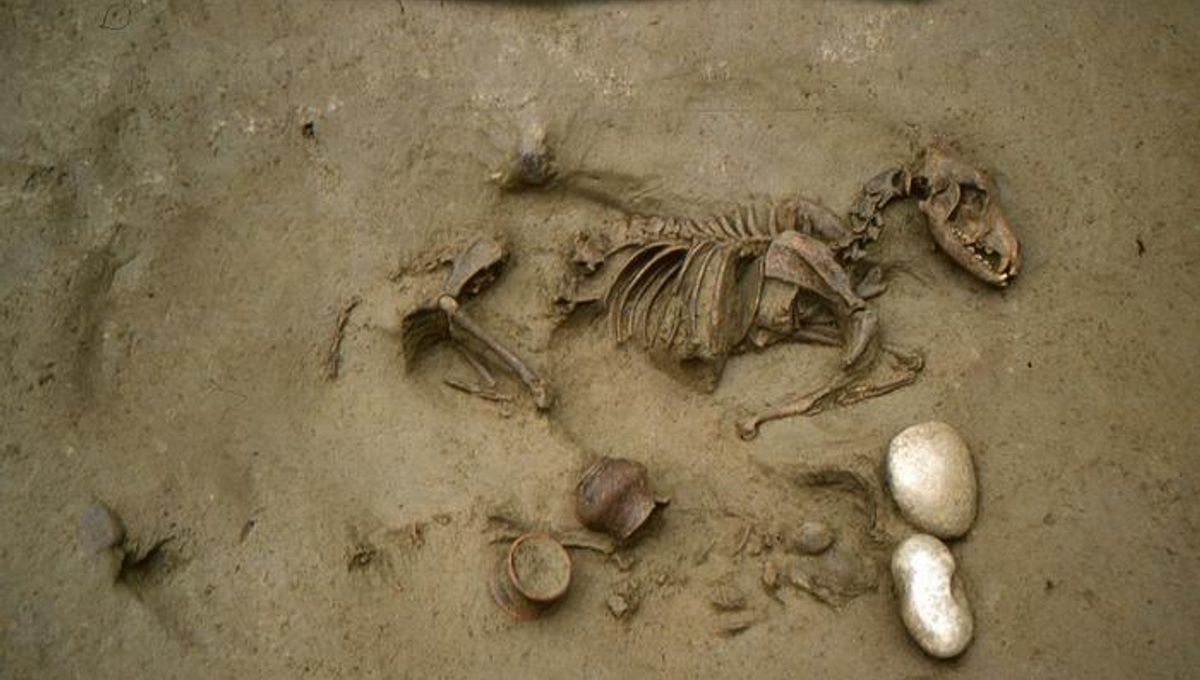
Members of a pre-Roman culture in Italy were sometimes buried with animals including dogs and horses, though researchers are unable to explain why this was the case. After discovering several of these multi-species co-burials at a site in Verona, the authors of a new study speculate that the interred animals may have held some sort of religious significance, although they could also have been beloved pets.
While excavating the Seminario Vescovile – which was occupied by the Cenomane culture between the third and first centuries BCE – archaeologists uncovered a total of 161 human skeletons. Of these, 16 were buried alongside either whole animals or animal parts, the majority of which were chickens, pigs or cows and therefore probably placed in the graves as food offerings to the dead.
However, the researchers’ attention was grabbed by four burials that contained the remains of dogs and horses, neither of which were typically eaten by ancient Europeans. For instance, they found a baby girl that had been laid to rest with a complete dog skeleton, as well as a middle-aged woman whose bones were accompanied by an entire horse, multiple other horse parts and the skull of a dog.
A young man was also interred alongside horse bones while a middle-aged man had a small dog for eternal company.
In an attempt to understand this strange ancient practice, the study authors conducted genetic and isotopic analyses on the human skeletons, hoping to reconstruct the familial links and dietary customs of the buried individuals. Puzzlingly, however, they found that none of those who were buried with animals were closely related, thus ruling out the possibility of the tradition belonging to a certain family.
Similarly, the researchers failed to identify any clear dietary or funerary patterns that would suggest a connection between these peculiar burials. “Overall, our results point to the unsuitability of simple, straightforward explanations for the observed funerary variability,” they conclude.
Faced with such a lack of concrete evidence, the study authors are forced to seek out explanations by analyzing the traditions and customs of other ancient practices. For example, they point out that the Gallo-Roman god Epona – whose name is derived from the Celtic word for horse – is often depicted alongside dead horses.
“An association between the horse remains at [Seminario Vescovile] and the role of Epona as a guide who accompanies newly deceased souls to the afterlife is therefore an interesting possibility,” write the researchers. At the same time, however, they note that the skeletons buried alongside horses also show signs of bone fractures, which could indicate that these people were horse riders and therefore laid to rest with their favorite steeds.
Moving on to dogs, the authors state that this particular animal was regularly associated with the underworld by ancient cultures. “A link between dogs and the afterlife can be found throughout time and space, with examples from ancient Egypt, Scandinavia, Classical, and Gallo-Roman cultures,” they write.
The researchers therefore cautiously suggest that these canines may have been buried alongside humans for some religious or ritual purpose. However, lacking concrete evidence to support this argument, they also state that the dogs may simply have been beloved pets whose owners couldn’t bear to enter the afterlife without them.
The study is published in the journal PLOS ONE.
Source Link: Pre-Roman Skeletons Found Buried Alongside Dogs And Horses In Italy